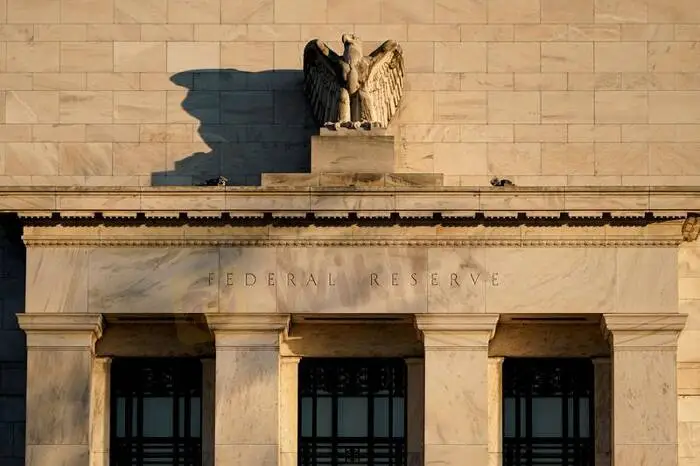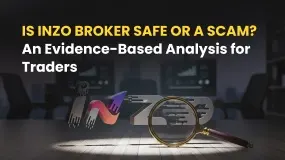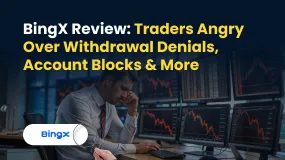简体中文
繁體中文
English
Pусский
日本語
ภาษาไทย
Tiếng Việt
Bahasa Indonesia
Español
हिन्दी
Filippiiniläinen
Français
Deutsch
Português
Türkçe
한국어
العربية
Analysis-Emerging market investors dive for stocks amid Fed storm
Abstract:Developing world investors, buffeted by various “taper tantrums” over the last decade, are now nervously watching as the rainmaker of global markets – the U.S. Federal Reserve – readies its most aggressive rate hike cycle in 17 years.

More hot jobs data on Friday drove the benchmark for world borrowing costs, the 10-year U.S. Treasury yield, to its highest level in two years, prompting yet more gnashing of teeth among emerging market money managers already having a tough year.
Deutsche Banks analysts point out that while some currencies managed to save face here and there, anyone who took the approach of hedging forex risk would have seen only one year that started worse than this one since 2010.
Fed tightening has not been bad news for all EM assets though.
EM stocks measured by MSCI‘s 25-country MSCIEF are flat for the year, which means they have done 5% better than their developed market peers, which is something of a pattern according to Morgan Stanley’s analysts.
“The outperformance of EM (stocks) after the first (Fed) hike is notable,” they said, noting that in Fed hike cycles since 1980, the MSCIEF has been up 17% on average six months after the first rate increase is delivered.
Morgan Stanley analysts have not yet made the call to “buy EM,” but they say “it suggests that the time to get more bullish on EM may be approaching.”
The massive outperformance from Latin American stocks in January could be a harbinger of more EM gains.
(Graphic: EM stocks vs U.S. rates, https://fingfx.thomsonreuters.com/gfx/mkt/akpeznebevr/Pasted%20image%201644004392617.png)
One silver lining in last years rout of Chinese stock markets is that many investors think they have a good chance of rebounding this year with authorities there now providing support to the economy again.
Swiss-based European fund heavyweight Pictet upgraded its view on Chinese stocks to “positive” this week on the basis of that support, and because they would probably be a good hedge in the event of a full-blown Russia-Ukraine military conflict.
“Chinese equities could recoup last year‘s declines and narrow the valuation gap with their counterparts in the coming months,” the firm’s chief strategist, Luca Paolini, said.
(Graphic: Chinese stocks make tentative recovery, https://fingfx.thomsonreuters.com/gfx/mkt/zdvxoanempx/Pasted%20image%201643806581616.png)
DORMANT DOLLAR
However, a more aggressive tightening cycle by the Fed and other top central banks could quickly reignite bond market pressures, said JPMorgans head of emerging market local markets and sovereign debt strategy, Jonny Goulden.
The “taper tantrum” shock of 2013-14, when the prospect of a reduction in post-financial crisis support from the Fed hit emerging market assets hard, still haunts EM veterans.
Returns on JPMorgans hard currency emerging markets bond index EMBI Global Diversified are -2.6% since the start of the year, while those for the local currency fixed income benchmark are at 1%.
“The Fed tightening cycle remains the focus for EM, but so far this year these pressures are curiously materializing in credit rather than local markets,” Goulden said in a note to clients on Friday.
“We would normally expect these forces to drive greater dollar strength, but EM FX (year-to-date) spot returns are +1%.”
Data on capital flows backed up this trend, Goulden added, saying short-term fund flows had also shifted with emerging market local bond funds pulling in more than $1 billion while hard-currency funds suffered $2.3 billion of outflows to start 2022.
Deutsche Bank said since 2013 Mexico, Poland, the Philippines and Hungary are the EMs with the highest correlation to rising U.S. yields, when looking at their local 10-year benchmarks.
“During large moves, we find that all countries (but China) have provided negative returns during periods of extreme bearish moves in U.S. Treasuries,” Deutsches analysts said, showing that bonds from Turkey, the Philippines, Mexico and Peru posted the biggest losses.
Given their expectation of a U.S. 10-year yield at 2.25% by the end of next month, DB analysts imply a forex-hedged return for EM fixed income that would actually outperform Treasuries on a “total return” basis which takes into account any currency move.
“However, this would still not necessarily be a strong buying argument at this point in time,” they said. “We recommend that despite the recent underperformance, investors maintain a more cautious approach on the asset class.”

Disclaimer:
The views in this article only represent the author's personal views, and do not constitute investment advice on this platform. This platform does not guarantee the accuracy, completeness and timeliness of the information in the article, and will not be liable for any loss caused by the use of or reliance on the information in the article.
Read more

Is Inzo Broker Safe or a Scam? An Evidence-Based Analysis for Traders
When traders check out a new broker, the main question is always about safety and whether it's real. Is Inzo a trustworthy partner for your trading capital, or is it a scam you should stay away from? The broker looks modern and professional, offering popular platforms and many different account types. However, this polished look is clouded by many serious complaints from users who report big problems with their money and trading conditions. A simple "yes" or "no" answer isn't enough. To reach a good conclusion, we need a detailed investigation based on facts. This analysis will give you a clear and fair breakdown of the facts. We will cut through the mixed information to give you a complete picture of Inzo.

Is Uniglobe Markets Legit? A 2025 Simple Guide to Its Safety, Services, and User Warnings
When traders ask, "Is uniglobe markets legit?" They want a clear answer about whether their capital will be safe. This simple guide for 2025 will give you that answer by examining the broker from every important angle. The most important thing we found is that Uniglobe Markets works without proper financial rules and oversight, causing serious risks. This review will carefully examine its legal status, look at confusing company information, explain its trading conditions, and share real user problems. When checking any broker, it's smart to use websites with detailed verification. Traders can find complete profiles and current warnings for thousands of brokers on WikiFX to help with their research. This article will show you the facts, so you can decide smartly based on evidence, not advertising promises.

BingX Review: Traders Angry Over Withdrawal Denials, Account Blocks & More
Are BingX officials with you when you lose your trade? Do these officials apply restrictions on withdrawals as you earn profits? Do you lose access to BingX com login after earning profits? Does the US-based forex broker block your trading account in such situations? Failing to get key trading data access from the broker? These issues have been affecting many traders at BingX. In this BingX review article, we have shared some complaints. Take a look!

Uniglobe Markets India Review 2025: A Complete Guide to Safety, Costs, and Features
Started in 2014, Uniglobe Markets, a forex and CFD broker, has become known in the Indian trading community. The company offers different types of accounts, access to popular trading software, and high leverage options. However, every trader's main concern should be whether their money is safe and if the broker is legitimate. This article gives you a detailed and factual look at Uniglobe Markets, focusing on its services, trading conditions, and most importantly, how safe it is. To answer the main question about legitimacy right away: Uniglobe Markets operates without any valid financial regulation. This one fact is the most important thing to know about our entire review, as it has serious consequences for trader safety. Our goal is to break down all the available information to help you make a smart decision.
WikiFX Broker
Latest News
BASF CEO: EU CO₂ Trading Is A "Destruction Mechanism" For European Industry
Is Fyntura a Regulated Broker? A Complete 2025 Broker Review
Zetradex Exposed: Withdrawal Denials, Account Freeze & Bonus Issues Hurt Traders
Is Forex Zone Trading Regulated and Licensed?
PINAKINE Broker India Review 2025: A Complete Guide to Safety and Services
Exness Restricted Countries List 2025 Explained
Is Uniglobe Markets Legit? A 2025 Simple Guide to Its Safety, Services, and User Warnings
Is Inzo Broker Safe or a Scam? An Evidence-Based Analysis for Traders
WikiEXPO Dubai 2025 “Welcome Party” Kicks Off Tonight!
He Trusted a WhatsApp Group and Lost RM659,000
Currency Calculator



